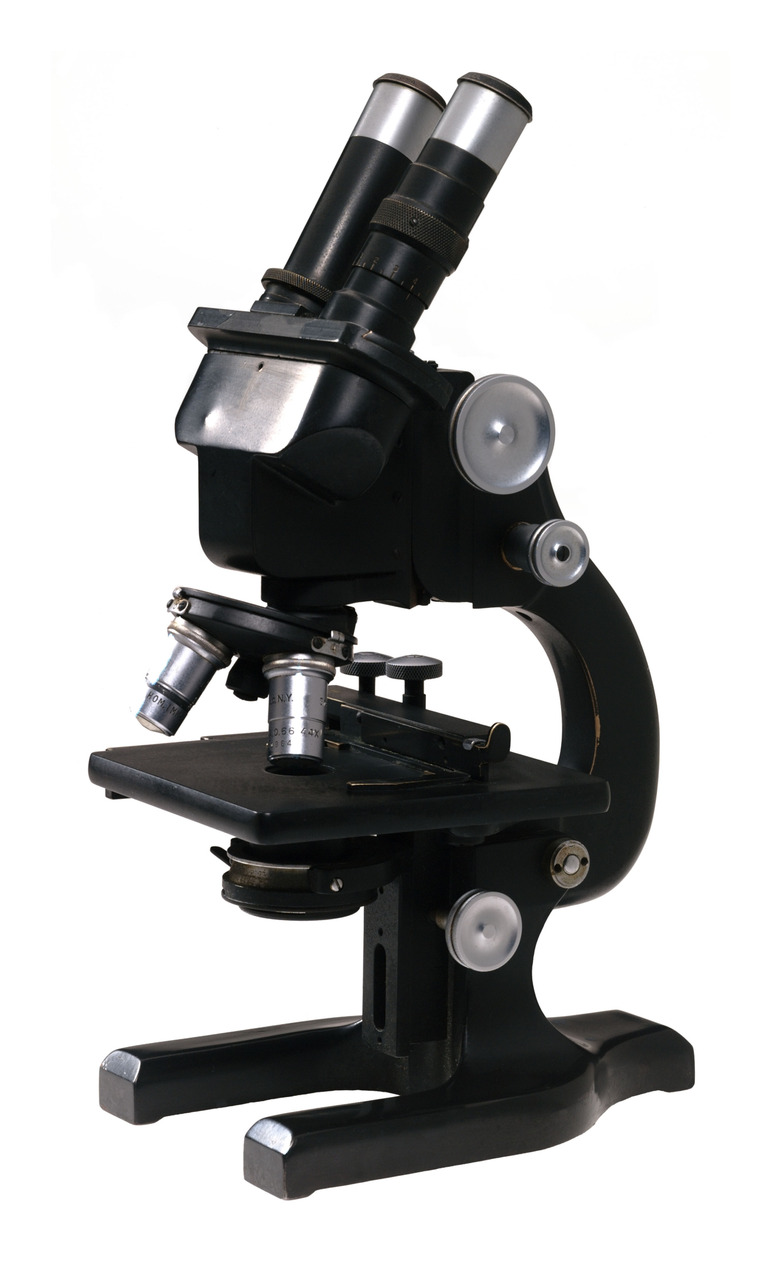What Is Interphase, Metaphase & Anaphase?
The cell cycle is one of the many things that distinguishes eukaryotic cells from their simpler counterparts, prokaryotic cells. The phases of the cell cycle describe one complete journey from the point a cell is "born" (at the end of cytokinesis of its parent cell) to the point it divides in half in carrying out its own cytokinesis (to create two genetically identical daughter cells).
The cell cycle consists of interphase and the M (mitotic) phase. The former follows a sequence of the G1 phase (first gap), S phase (synthesis), and the G2 phase (second gap) phases, while the latter includes mitosis and cytokinesis.
Mitosis is the only one of these that includes further formal divisions, and includes prophase, metaphase, anaphase and telophase.
Interphase Stages
Interphase Stages
The process of interphase involves most of the preparation before mitosis. Cells grow larger overall and duplicate many of their own contents. The duplication, or replication, of a cell's genetic material is reserved for its own stage of interphase.
In the G1 stage, right after a cell is "born," not much appears to be happening at a microscopic glance, but the cell in this stage is readying itself for action. Energy stores and the building blocks of DNA accumulate inside the cell.
In S phase, the genetic material of the cell, the DNA within the nucleus, is replicated into two identical sets of chromosomes. This means that all 46 single chromosomes are copied. These remain physically linked in the form of sister chromatids.
TL;DR (Too Long; Didn't Read)
DNA replication – duplication of DNA to create an identical set of DNA – is distinct from DNA transcription – the creation of RNA from a DNA sequence.
The G2 stage replicates important organelles within the cell, and the cell as a whole grows larger to accommodate these extra components. In this stage, the cell also checks its own work, looking for replication errors and other manufacturing miscues and also preparing the ingredients of mitosis.
M Phase Summary
M Phase Summary
The M Phase starts with the beginning of mitosis and ends with the conclusion of cytokinesis. These processes overlap to a slight extent, as cytokinesis starts to outline a plane of division for the new daughter cells before the final separation of components from mitosis is complete.
The process of mitosis can be thought of as the division of the nucleus and all of its contents into two genetically identical daughter nuclei. Cytokinesis is the division of the cell as a whole that occurs to place the daughter nuclei from mitosis into two new cells.
Stages of Mitosis
Stages of Mitosis
The four phases of mitosis are separated into the prophase, metaphase, anaphase, and telophase. Mitosis works to separate out the necessary components to prepare for cell division during cytokinesis.
**Prophase:** In this step, the replicated chromosomes, in the form of joined sister chromatids, start to condense. The mitotic spindle apparatus forms as the centrioles move to their positions in the poles and the nuclear membrane dissolves.
TL;DR (Too Long; Didn't Read)
Prophase is sometimes identified as two distinct stages: prophase and prometaphase.
**Metaphase:** The chromosomes begin to migrate to the plane of cell division in the cell, called the metaphase plate. Remember that chromosomes are duplicated in interphase; metaphase keeps one copy on each side of the metaphase plate. Microtubules from the mitotic spindle attach to the kinetochores (a dense protein center of the chromosome) to pull the chromosomes into position.
**Anaphase:** The sister chromosomes are pulled apart at their centromeres by the spindle fibers and move to opposite poles of the cell. Cytokinesis, meanwhile, is just getting started at the level of the cell membrane.
**Telophase:** This is essentially prophase run backward, as nuclear membranes forms around the daughter chromosome sets to form two daughter nuclei.
TL;DR (Too Long; Didn't Read)
Mitosis commonly occurs for traditional cell division, while meiosis is a distinct process for the creation of genetic cells (gametes).
Cytokinesis
Cytokinesis
The process of cytokinesis typically starts during the anaphase or telophase sequence of mitosis, resulting in the division of a parent cell into two identical daughter cells.
In animal cells, the cytoplasm begins to constrict inward along the cleavage furrow, and motor proteins start a "pinching" process to separate the halves of the cell.
In plant cells, this does not occur because of the presence of a cell wall; instead, the entire cell uses the metaphase plate from mitosis as a plane of cleavage for the cell as a whole. The cell creates a new cell wall along the cell plate, and the cell divides along this new barrier in the center of the cell.
Cite This Article
MLA
Beck, Kevin. "What Is Interphase, Metaphase & Anaphase?" sciencing.com, https://www.sciencing.com/interphase-metaphase-anaphase-14476/. 20 June 2023.
APA
Beck, Kevin. (2023, June 20). What Is Interphase, Metaphase & Anaphase?. sciencing.com. Retrieved from https://www.sciencing.com/interphase-metaphase-anaphase-14476/
Chicago
Beck, Kevin. What Is Interphase, Metaphase & Anaphase? last modified June 20, 2023. https://www.sciencing.com/interphase-metaphase-anaphase-14476/
